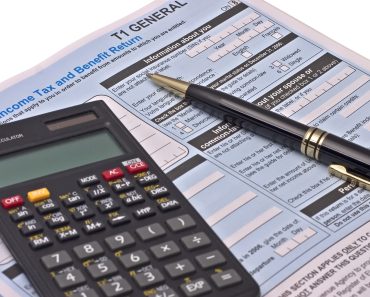
The RRSP withholding tax plays a significant role in Canada’s retirement savings plans. Understanding its basics, rates, and exceptions is crucial. Early withdrawals can have consequences for retirement funds and tax obligations. Managing taxable income and utilizing strategies to minimize RRSP withholding tax are essential. Sun Life Financial offers a range of products and services for RRSP planning, including investment options and helpful tools and resources. Explore this comprehensive guide to RRSP withholding tax for a better understanding of its implications in Canada.
RRSP Withholding Tax: Understanding the Basics
When it comes to planning for retirement in Canada, it’s essential to have a good understanding of RRSP withholding tax. This tax is applied when you withdraw funds from your Registered Retirement Savings Plan (RRSP). It’s important to know how it works and the implications it can have on your retirement savings.
What is RRSP Withholding Tax?
RRSP withholding tax is the amount that the government automatically withholds from your RRSP withdrawals. It is considered a prepayment of the income tax you’ll owe on the withdrawal. The amount withheld depends on several factors, including the amount withdrawn and your residential status.
How Does RRSP Withholding Tax Work?
When you make a withdrawal from your RRSP, the financial institution will withhold a certain percentage of the amount as tax before giving you the remaining funds. For residents of Canada, the withholding tax rates range from 10% to 30%, depending on the amount withdrawn and the province of residence. Non-residents are subject to a flat withholding tax rate of 25%.
The Importance of RRSP Withholding Tax
Understanding RRSP withholding tax is crucial because it directly affects your retirement funds. Withdrawing funds early can have significant financial implications, including reducing your overall retirement savings and potentially incurring tax penalties. It’s important to carefully consider the impact of RRSP withdrawals and weigh them against your long-term financial goals.
Factors Affecting RRSP Withholding Tax
The amount of RRSP withholding tax is influenced by several factors that vary depending on an individual’s circumstances. These factors include residential status, different tax rates, and considerations for non-residents.
Residential Status and RRSP Withholding Tax
Your residential status in Canada plays a significant role in determining the RRSP withholding tax. Canadian residents are subject to specific tax rates, while non-residents have a different withholding tax rate.
Different Rates of RRSP Withholding Tax
For Canadian residents, the withholding tax rates on RRSP withdrawals differ based on the amount withdrawn. The rates are 10%, 20%, and 30% for residents of Canada (5%, 10%, and 15% in Quebec). These rates apply to the withdrawn amount after considering specific exemptions.
RRSP Withholding Tax for Non-Residents
Non-residents of Canada are subject to a flat withholding tax rate of 25% on RRSP withdrawals. This tax rate applies regardless of the amount withdrawn and their residential status in other countries.
Understanding these factors is crucial in calculating the applicable RRSP withholding tax based on your situation. It is essential to consult with a financial advisor or tax professional familiar with Canadian tax laws to ensure compliance and proper management of your RRSP contributions and withdrawals.
Consequences of Early RRSP Withdrawals
Withdrawing funds from your Registered Retirement Savings Plan (RRSP) before reaching retirement age can have significant consequences. It not only impacts your retirement funds but also carries tax implications. Here are some important considerations:
Impact on Retirement Funds
Early RRSP withdrawals can severely diminish your retirement savings. The funds you withdraw may not have enough time to grow and compound, reducing the overall value you would have accumulated by retirement. It is important to carefully consider whether the immediate need outweighs the long-term consequences of depleting your RRSP.
Tax Implications of Premature RRSP Withdrawals
When you withdraw money from your RRSP before retirement, it is considered taxable income in the year of withdrawal. This means that the amount you withdraw will be added to your annual income and taxed at your marginal tax rate. The tax implications can be significant, potentially resulting in higher income tax payments and reducing the overall value of your withdrawal.
Alternatives to Early RRSP Withdrawals
If you find yourself in a financial situation where you need funds but want to avoid the negative consequences of early RRSP withdrawals, there are alternative options to consider:
- Harnessing other sources of savings or emergency funds to meet immediate financial needs.
- Exploring lines of credit or low-interest loans to temporarily bridge the gap.
- Creating a comprehensive budget to manage expenses more effectively.
- Seeking financial advice from professionals who can provide guidance on alternative strategies.
Remember, early RRSP withdrawals should be carefully evaluated and used as a last resort to protect the integrity of your retirement savings and minimize the associated tax implications.
Exceptions to RRSP Withholding Tax
Home Buyers’ Plan (HBP)
The Home Buyers’ Plan (HBP) is a program that allows individuals to withdraw funds from their RRSP to purchase or build a qualifying home. This exemption from RRSP withholding tax provides an opportunity for first-time homebuyers to access their retirement savings without immediate tax consequences. Under the HBP, you can withdraw up to $35,000 from your RRSP (or $70,000 for a couple) to fund your home purchase.
Lifelong Learning Plan (LLP)
The Lifelong Learning Plan (LLP) enables individuals to withdraw funds from their RRSP to finance their own or their spouse’s or common-law partner’s education or training. This exemption from RRSP withholding tax helps to alleviate the financial burden of pursuing further education. You can withdraw up to $10,000 per year, up to a maximum of $20,000, from your RRSP under the LLP.
Both the HBP and LLP exemptions are subject to specific conditions and repayment requirements. It is essential to familiarize yourself with the eligibility criteria and repayment terms to make the most of these exceptions and avoid any potential tax issues.
Managing RRSP Withholding Tax
Understanding Your Taxable Income
When it comes to managing your RRSP withholding tax, understanding your taxable income is crucial. Your taxable income is the amount of income on which you are required to pay taxes. It includes your employment income, self-employment income, rental income, and investment income.
By assessing your taxable income, you can determine the appropriate amount to contribute to your RRSP and take advantage of tax deductions. Keep in mind that contributions made to your RRSP will be tax-deductible, which can help reduce your overall tax liability.
Strategies to Minimize RRSP Withholding Tax
Minimizing your RRSP withholding tax involves employing effective strategies. One strategy is to contribute the maximum allowable amount to your RRSP each year. By doing so, you can increase your tax savings and potentially reduce the amount subject to withholding tax at the time of withdrawal.
Another strategy is to spread out your RRSP withdrawals over multiple years. By managing the timing of your withdrawals, you can minimize the impact on your taxable income in any given year. This can help you stay within lower tax brackets and potentially reduce the amount of withholding tax.
Additionally, consider diversifying your retirement income sources. By having a mix of RRSPs, Tax-Free Savings Accounts (TFSAs), and other investments, you can potentially optimize your tax situation and have more flexibility in managing your taxable income.
Reporting RRSP Withholding Tax on Tax Return
Reporting your RRSP withholding tax on your tax return is a critical step in managing your overall tax obligations. When filing your tax return, you must accurately report any withholding tax that has been deducted from your RRSP withdrawals.
On your tax return, you will need to complete the appropriate sections related to RRSP withdrawals and provide the necessary information, including the amount of withdrawals made and the corresponding withholding tax amounts. This will ensure that you reconcile your RRSP withholding tax correctly and avoid any potential errors or audit triggers.
Consult with a tax professional or utilize digital tax filing tools to ensure accurate reporting of your RRSP withholding tax and to maximize your tax benefits.





